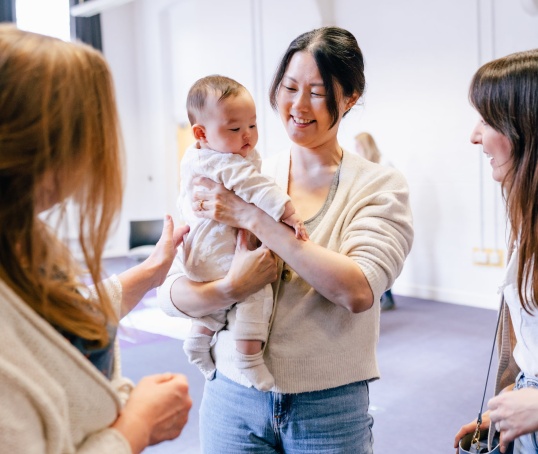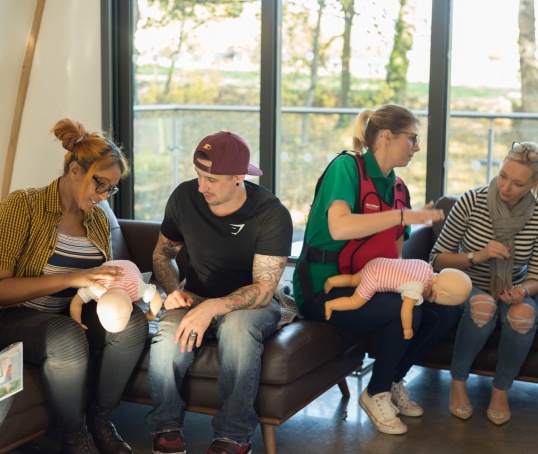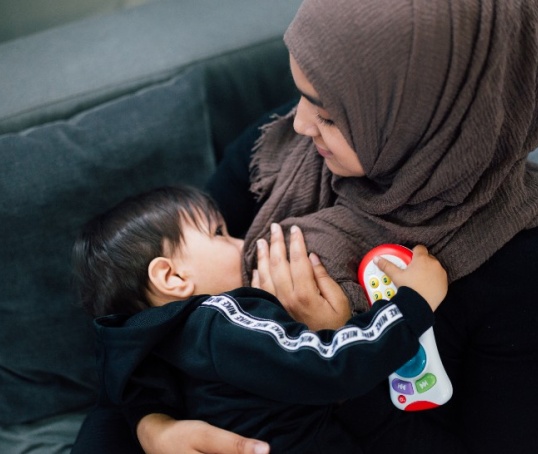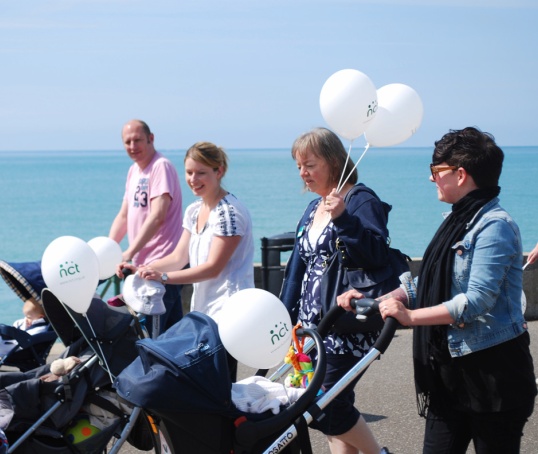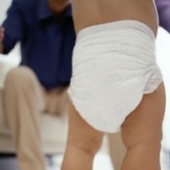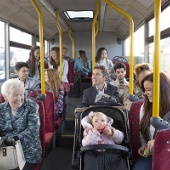Baby carriers and slings can be useful for holding a baby hands-free but it is important to use them safely. Here we explain more.
What is a sling, wrap or carrier?
A sling, wrap or carrier provides comfort and support for the baby and allows you to carry a child hands-free. It’s not a new idea and has been practised for centuries in different cultures. We’ll use the terms sling, wrap and carrier interchangeably in the rest of this article.
There are lots of types of slings so it’s worth finding out about the different styles. You could even try a few before you choose one. NCT has sling libraries where you can do this, which you can find here or email enquiries@nct.org.uk.
Are there are any benefits to using a sling?
Practical
Many carers say it’s practical, whatever your lifestyle.
Good for getting around
Slings help with moving around as they are easier to use in some places than pushchairs. For example, lifts, steps, narrow doors and pavements are easier to navigate. They can be simpler to use on public transport or in the countryside. Some babies resist the pushchair but are calm in the sling (Whittle, 2019).
Useful with more than one child
Parents or caregivers of more than one baby may find it easier if one baby is held in a sling. They can provide an accessible way for those with limited mobility to transport or care for their baby (Krassioucov et al, 2024). Co-parents and caregivers can use slings to share the parenting load while gaining closeness and nurturing the baby (Whittle, 2021).
Builds attachment
Research shows that babywearing helps build attachment. It also makes the wearer more responsive to the baby’s needs (Williams & Turner, 2020). It promotes the baby’s sleep regulation, speech, social and emotional development (Norholt, 2020).
Can improve mental health
For parents and caregivers, it can improve positive mental health. Research shows it can help reduce stress, fatigue and insomnia (Norholt, 2020; Havens et al, 2022; Whittle, 2021).
Positive effect on breastfeeding
Using a sling for at least an hour a day is linked to more frequent breastfeeding (the baby should always be taken out of the carrier to feed). It might also help to extend the breastfeeding relationship. This includes the use of expressed breastmilk in a bottle (Pisacane et al, 2012; Little et al, 2021).
This might be because the wearer responds better to the baby’s cues or because close contact stimulates the hormones involved in breast or chest feeding (Pisacane et al, 2012).
How can I keep my baby safe in their sling, wrap or carrier?
When it comes to using slings, it’s very important to follow a few simple guidelines.
- Check the manufacturer’s instructions. Follow their advice on whether the baby’s size, weight and age are right for the carrier.
- If you bought the sling second-hand and the instructions are missing, contact the manufacturer. You may be able to download a copy from their website. Many manufacturers have videos on their website on how to secure the sling safely. However, be aware that some sling demonstrations on social media are by untrained influencers and may not be safe.
- Before you use a second-hand sling or carrier, check for signs of wear and tear. Don't use it if you have any concerns.
- Not all slings or carriers suit all adult or baby body types. Find one that works for both the wearer and the baby. For some families that might mean each parent uses a different carrier. Different wearers using the same sling might need to adjust the straps to their body before use.
- Temperature regulation is critical for young babies, so remember a baby will be picking up the wearer's body heat. In cold weather, follow the same guidelines as for car seats to keep the baby safe. That means putting additional protective layers outside the carrier, so the straps fit snugly to the baby. Ensure that any layers outside the carrier do not cover the baby's head or face.
- If the carrier is being used in any other way than the manufacturer's instructions, the baby should be held as if in arms only. The wearer should not do any activity that they wouldn't do with the baby held in arms only.
- Smoking should be avoided for an hour before holding and carrying babies, and while holding or carrying them.
- The adult wearer needs to be alert, feeling well, and not distracted.
- Never sleep while wearing a baby in a sling or carrier.
How should the baby be held?
- The safest baby carrier holds the baby upright and facing them (NHS, 2024).
- It supports their body well and keeps them close to the wearer's body. This way, the wearer can always see their face.
- The baby's weight should be distributed evenly across the wearer's shoulders, hips and back (ROSPA, no date).
- It should feel comfortable – if it feels loose or unbalanced, try again or get support.
- When the baby is in the wrap, check them often, making sure their nose and mouth are clear so they can breathe easily.
- Keep their chin off their chest and make sure nothing is covering their face (RoSPA, no date; NHS, 2024). This is especially important when carrying young babies under four months old.
The UK Sling Consortium’s T.I.C.K.S checklist is used by the Royal Society for the Prevention of Accidents (RoSPA) and gives the following guidance:
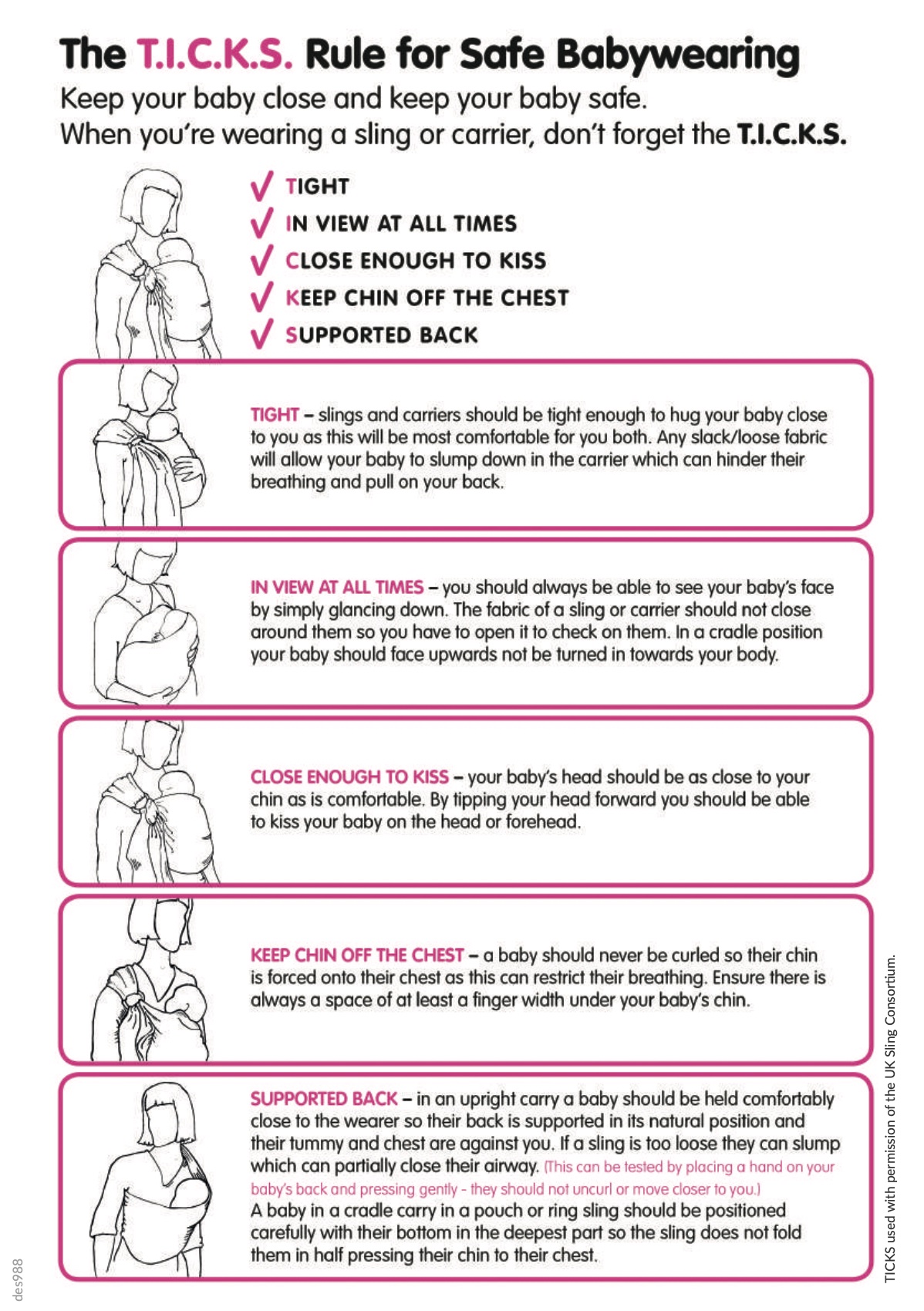
Baby positions for slings and carriers
For the first six months of a baby's life, a recommended position is known as the spread squat, jockey position or M-position. It helps their hips develop correctly and encourages social development as they are facing their parent or caregiver (International Hip Dysplasia Institute, No date). This also makes it easier to keep them in view at all times.
- The spread squat is where the baby is facing their adult and has their thighs spread around the wearer’s torso.
- The baby also has their hips bent so their knees are slightly higher than their bottom.
- Alternatively, the baby's knees are level with their bottom and with the thighs supported.
- It is particularly important if a baby is being held in a sling for long periods of time.
- Read more about hip dysplasia (hips growing abnormally).
You can find guidance on different slings and how to use them from local sling consultants and libraries. Do ask for evidence of training and insurance from the provider. They should always follow the T.I.C.K.S safe carrying guidelines.
What are the risks of using slings?
When using a sling, it’s important to follow the manufacturer’s guidelines to reduce any risks. Anyone carrying a baby in a sling should follow the T.I.C.K.S guidelines at all times.
Although rare, very sadly, some babies have been injured or died in baby slings and carriers. Young babies do not have strong neck control and cannot lift their head, so their airway can easily be blocked. A sling’s fabric or fabric from the parent or caregiver’s clothing could cause suffocation very quickly (Batra et al, 2015). If the sling or carrier is not correctly fitted and adjusted, babies can experience traumatic head injuries (Rowe et al, 2022).
If the baby was born prematurely, with a low birth weight or has a medical condition, talk to a health professional before using a carrier or sling. They can help you understand how to safely use it.
For the wearer, using a sling can lead to back pain (Havens et al, 2022). Getting good one-to-one guidance on how to correctly use the sling might prevent this.
Can I feed my baby in a sling?
‘Hands-free’ feeding
‘Hands-free’ breastfeeding or bottle feeding, where the wearer moves around and does other jobs while the baby is feeding, is unsafe.
This is especially true for babies under four months old. It also applies to babies born prematurely or those with a health condition (Bergounioux et al, 2015). Moving around with loose sling fabric could also be a trip hazard.
If the baby needs to feed, take them out of the sling. When they have finished feeding, either return them to the sling or put the baby down in a safe space.
Further information
For more information on the slings available, find your nearest NCT sling library. Our sling libraries have a wide variety of slings and carriers to try and hire so you can find which one works best for you.
The Twins Trust has information on caring for twins and multiples, including safe use of slings.
Batra EK, Midgett JD, Moon RY. (2015) Hazards associated with sitting and carrying devices for children two years and younger. J Pediatr. 167(1):183-187. https://doi.org/10.1016/j.jpeds.2015.03.044
Bergounioux, J., Madre, C., Crucis-Armengaud, A. et al. (2015) Sudden deaths in adult-worn baby carriers: 19 cases. Eur J Pediatr. 174, 1665–1670. https://doi.org/10.1007/s00431-015-2593-6
Havens, KL et al (2022) Infant Carrying in the United States: A Survey of Current Practices, Physical and Mental Health Benefits, and Challenges of Babywearing. Journal of Women's Health Physical Therapy. 46(1):p 25-34. https://doi.org/10.1097/JWH.0000000000000227
International Hip Dysplasia Institute. (no date) Baby wearing. https://hipdysplasia.org/baby-wearing/ [7 Jan 25]
Krassioukov A, et al (2024) Breastfeeding Following Spinal Cord Injury: Consumer Guide for Mothers. Top Spinal Cord Inj Rehabil; 30 (2): 54–64. https://doi.org/10.46292/sci23-00080
Little EE, Cioffi CC, Bain L, Legare CH, Hahn-Holbrook J (2021) An Infant Carrier Intervention and Breastfeeding Duration: A Randomized Controlled Trial. Pediatrics; 148 (1): e2020049717. https://doi.org/10.1542/peds.2020-049717
Norholt H. (2020) Revisiting the roots of attachment: A review of the biological and psychological effects of maternal skin-to-skin contact and carrying of full-term infants. Infant Behav Dev. 60:101441. https://doi.org/10.1016/j.infbeh.2020.101441
NHS (2024) Reduce the risk of sudden infant death syndrome (SIDS). https://www.nhs.uk/conditions/baby/caring-for-a-newborn/reduce-the-risk… [8 Jan 25]
Pisacane A, Continisio P, Filosa C, Tagiamonte V, Continisio I. (2012) Use of baby carriers to increase breastfeeding duration among term infants: the effects of an educational intervention in Italy. Acta Paediatr. 101(10):e434-8. https://doi.org/10.1111/j.1651-2227.2012.02758.x
ROSPA. (no date) Baby slings. https://www.rospa.com/home-safety/advice/product/baby-slings [7 Jan 25]
Rowe S, Reeves P, McAdams R, Roberts K, Dobson N, McKenzie L. (2022) Baby wearing injuries presenting to emergency departments, 2011-2020: a dangerous fashion trend. Pediatrics. 149 (1) :962 https://publications.aap.org/pediatrics/article/149/1%20Meeting%20Abstr… [7 Jan 25]
Whittle R. (2019) Baby on board: the impact of sling use on experiences of family mobility with babies and young children. Mobilities. 14(2). https://doi.org/10.1080/17450101.2018.1533682
Whittle R. (2021) Towards interdependence: using slings to inspire a new understanding of parental care. Child Geogr. https://doi.org/10.1080/14733285.2021.1955091
Williams L, Turner P. (2020) Experiences with “babywearing”: trendy parenting gear or a developmentally attuned parenting tool? Child Youth Serv Rev. 112:104918. https://doi.org/10.1016/j.childyouth.2020.104918


